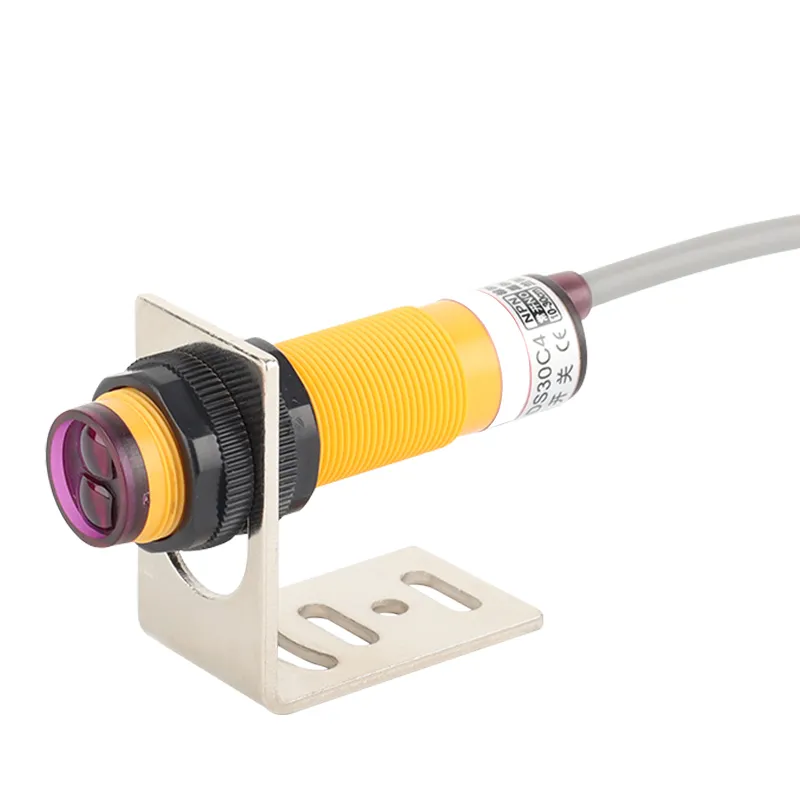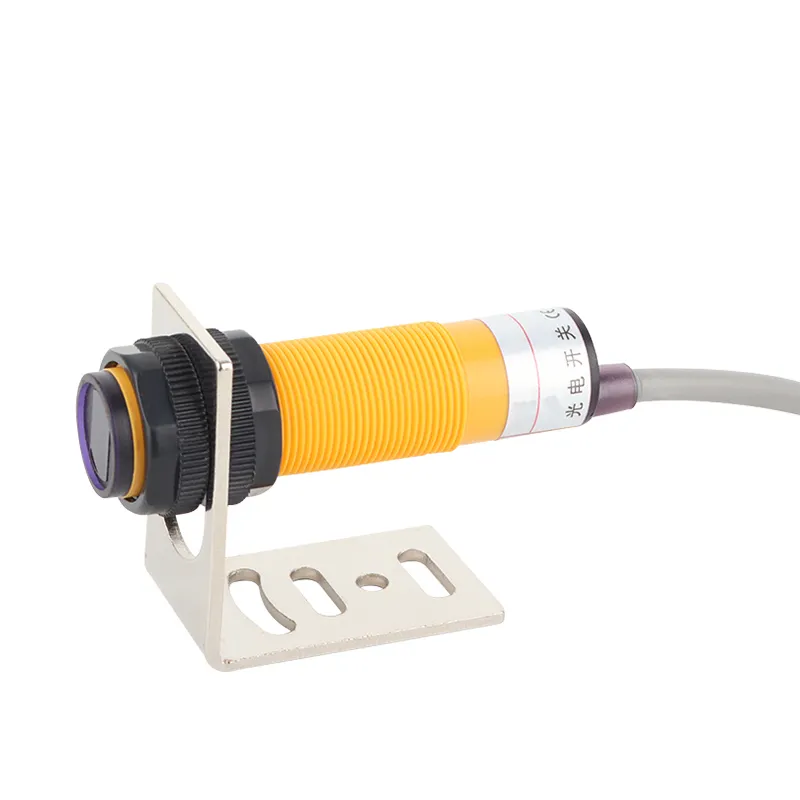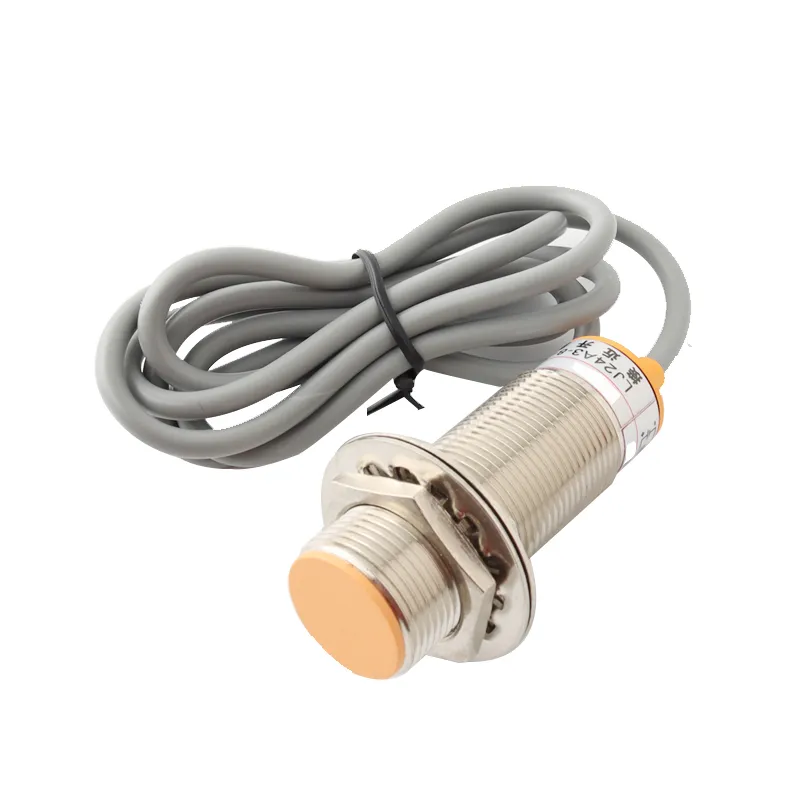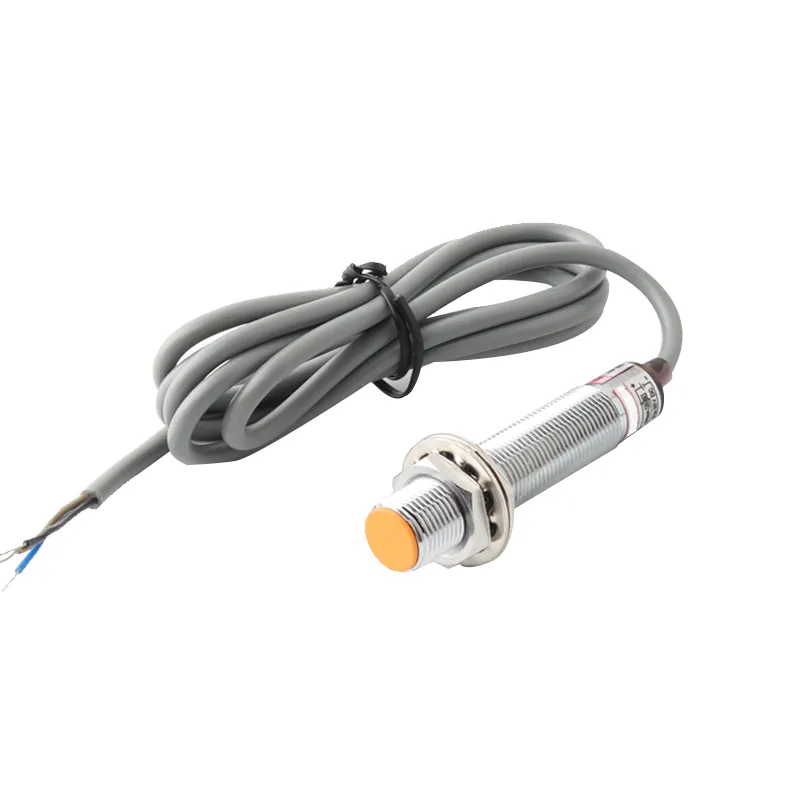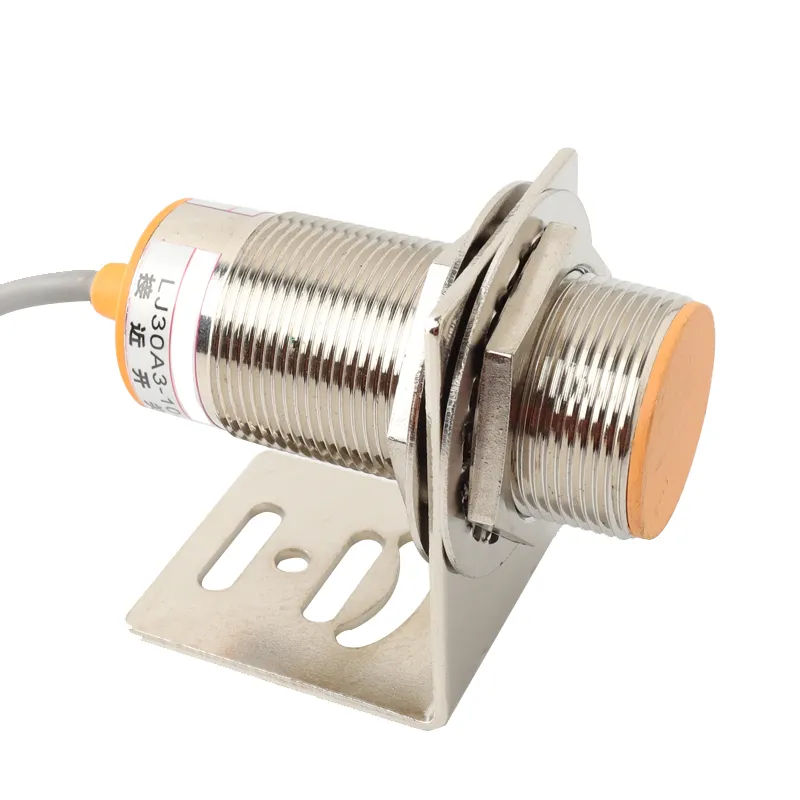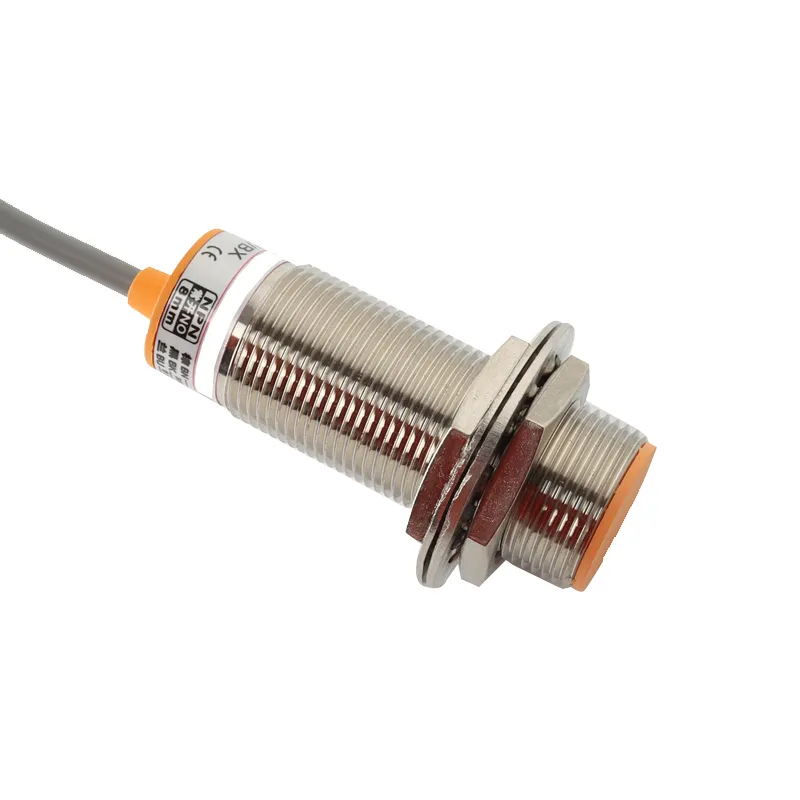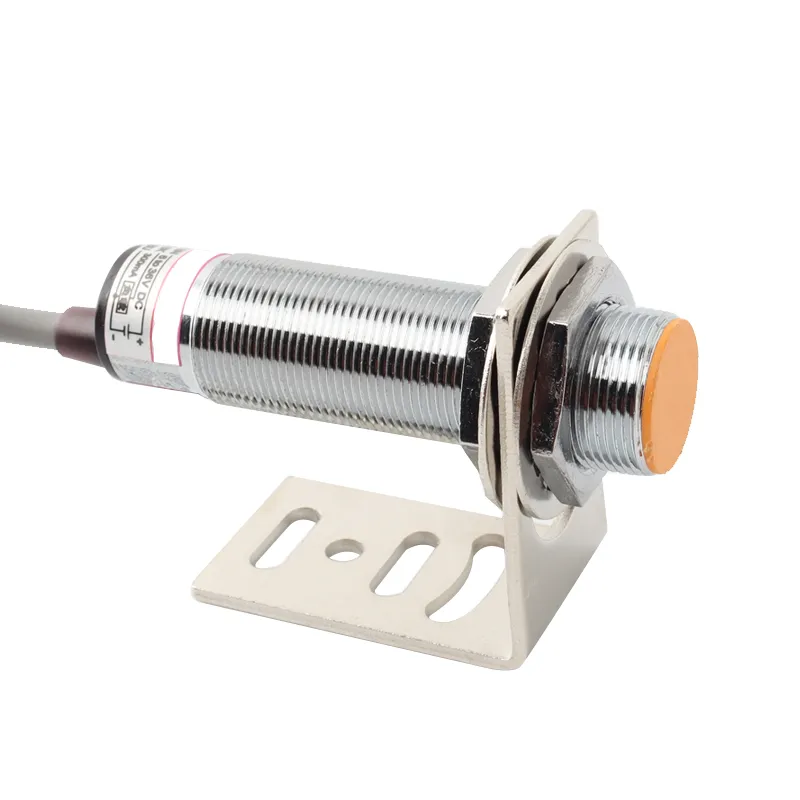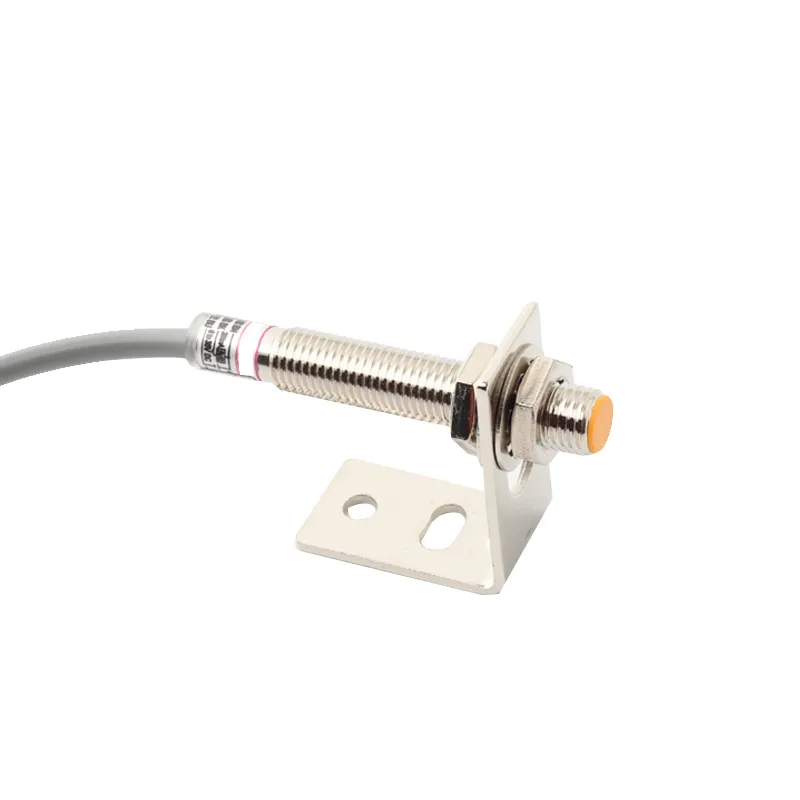Un sensor de proximidad es un dispositivo que detecta la presencia de objetos cercanos sin contacto físico. En lugar de tocar o presionar algo, "detecta" la presencia de un objeto detectando cambios en el entorno circundante. También conocido como sensor sin contacto, puede detectar objetos dentro de un rango específico y se utiliza ampliamente en la industria, la automoción, la robótica y la electrónica de consumo.
Si alguna vez se ha preguntado cómo su smartphone sabe cuándo está cerca de su cara o cómo las máquinas industriales detectan objetos sin tocarlos, la respuesta está en un ingenioso dispositivo llamado sensor de proximidad. Pero, ¿qué es exactamente un sensor de proximidad y por qué se está convirtiendo en una tecnología imprescindible en muchas aplicaciones B2B? Exploremos esta fascinante tecnología de sensores y comprendamos cómo impulsa la automatización y la innovación en múltiples campos.
¿Qué es un sensor de proximidad?
En pocas palabras, un sensor de proximidad es un dispositivo capaz de detectar la presencia de objetos cercanos sin contacto físico. En lugar de tocar o presionar algo, "siente" la presencia del objeto detectando cambios en el entorno que lo rodea.
- También conocido como sensor sin contacto
- Detecta objetos dentro de un rango específico
- Se utiliza ampliamente en la industria, la automoción, la robótica y la electrónica de consumo
Piensa que la pantalla de tu teléfono se atenúa cuando lo acercas a tu cara durante una llamada. Eso es un sensor de proximidad.
Cómo funcionan los sensores de proximidad
Desglosemos el principio clave: los sensores de proximidad funcionan emitiendo algún tipo de señal -puede ser un campo electromagnético, luz infrarroja, ondas ultrasónicas o campos magnéticos- y detectando después los cambios provocados por los objetos cercanos.
| Tipo de sensor | Señal de emisión | Principio de detección | Alcance típico | Materiales comunes detectados |
|---|---|---|---|---|
| Inductivo | Campo electromagnético | Cambios en las corrientes parásitas | De milímetros a cm | Metales |
| Capacitivo | Campo eléctrico (capacitancia) | Variación de la capacidad | mm a varios cm | Metales, plásticos, líquidos |
| Ultrasonidos | Ondas sonoras ultrasónicas | Tiempo de eco de las ondas sonoras reflejadas | cm a metros | La mayoría de las superficies sólidas y líquidas |
| Fotoeléctrico (IR) | Luz infrarroja | Reflexión o interrupción de la luz | cm a metros | Casi todos los materiales |
| Efecto Hall | Campos magnéticos | Cambios en el flujo magnético | mm a cm | Objetos magnéticos |
Cada tecnología de sensores de proximidad tiene puntos fuertes y limitaciones, y la elección depende de la aplicación específica. Por ejemplo, los sensores inductivos son excelentes para detectar metales en entornos industriales hostiles, mientras que los capacitivos son ideales para detectar objetivos metálicos y no metálicos.
Tipos de sensores de proximidad y sus diferencias
Conocer los distintos tipos le ayudará a elegir el sensor adecuado para su proyecto o necesidad de fabricación.
1. Sensores inductivos de proximidad
- Detectar sólo objetos metálicos
- Funcionan bien en entornos sucios o aceitosos
- Ampliamente utilizado en la automatización de fábricas para la detección de piezas metálicas
2. Sensores de proximidad capacitivos
- Detecta objetos metálicos y no metálicos como plástico o líquidos
- Sensible a los cambios en las propiedades dieléctricas del material
- Común para la detección de nivel en depósitos
3. Sensores ultrasónicos de proximidad
- Emitir ondas sonoras de alta frecuencia y medir el tiempo de eco
- Detecta una amplia gama de objetos, incluidos los transparentes
- Utilizado en robótica, sensores de aparcamiento de automóviles
4. Sensores fotoeléctricos de proximidad
- Utilizar haces de luz para detectar objetos
- Puede detectar cualquier objeto que interrumpa o refleje la luz
- Ideal para sistemas transportadores o cortinas ópticas de seguridad
5. Sensores de efecto Hall
- Detectar campos magnéticos para reconocer objetos magnéticos
- Extremadamente fiable en entornos difíciles
| Tipo de sensor | Detecta | Ventajas | Desventajas |
|---|---|---|---|
| Inductivo | Metales | Duradero, preciso para metales | Limitado a metales |
| Capacitivo | Metales, plásticos | Detecta líquidos, versátil | Sensible al medio ambiente |
| Ultrasonidos | Todo sólido/líquido | Largo alcance, funciona en la oscuridad | Afectados por el ruido |
| Fotoeléctrico | La mayoría de los materiales | Rápida respuesta, versátil | Necesita una superficie limpia |
| Efecto Hall | Objetos magnéticos | Fiable en condiciones difíciles | Limitado a objetos magnéticos |
Muchas industrias utilizan sensores de proximidad para la automatización, la eficiencia y la seguridad. He aquí algunos ejemplos:
- Automatización industrial: La detección de piezas en líneas de montaje sin contacto evita daños y acelera el procesamiento.
- Automóvil: Los sensores de aparcamiento y los sistemas anticolisión se basan en sensores ultrasónicos y capacitivos.
- Electrónica de consumo: Los smartphones utilizan sensores de proximidad para apagar las pantallas durante las llamadas, ahorrar batería y evitar toques accidentales.
- Sistemas de seguridad: Los sensores ayudan a activar las alarmas o a automatizar la iluminación cuando alguien se acerca.
- Robótica: Los robots utilizan sensores de proximidad para navegar y detectar objetos.
¿Está interesado en mejorar la automatización de su fabricación con sensores de proximidad? Póngase en contacto con nosotros para encontrar las mejores soluciones de sensores adaptadas a las necesidades de su sector.
Elegir el sensor de proximidad adecuado
Para seleccionar el mejor sensor hay que tener en cuenta:
- Distancia de detección: ¿Qué tan cerca o lejos puede detectar con precisión el sensor?
- Material objetivo: ¿Sólo metal o varios materiales?
- Condiciones ambientales: ¿Necesita soportar polvo, agua o temperaturas extremas?
- Señal de salida: ¿Conmutador digital o señal analógica?
| Criterios | Consideraciones | Ejemplo |
|---|---|---|
| Rango de distancia | Detección corta frente a detección larga | Capacitivo para corto, ultrasónico para largo |
| Tipo de material | Sólo metal o todos los materiales | Inductivo para metal, capacitivo para otros |
| Resistencia al medio ambiente | Grado de protección IP, temperatura | IP67 para uso en exteriores |
| Tipo de señal | Encendido/apagado digital o señal analógica | Analógico preferido para mediciones precisas |
Para las compras al por mayor o el diseño de sensores personalizados, es esencial ponerse en contacto con proveedores que comprendan sus necesidades y puedan ofrecerle una asistencia técnica completa.
Los sensores de proximidad han revolucionado la forma en que las máquinas y los dispositivos perciben su entorno, sin tocar nada. Desde las fábricas hasta los teléfonos inteligentes, estos sensores permiten realizar operaciones más rápidas, seguras e inteligentes. Conocer los tipos, principios de funcionamiento y aplicaciones de los sensores de proximidad ayuda a las empresas a tomar decisiones informadas sobre las necesidades de automatización y detección.
Si su empresa desea integrar o actualizar sensores de proximidad en sus productos o procesos industriales, no dude en ponerse en contacto con nosotros. Sólo tiene que enviar un mensaje para recibir asesoramiento experto y sensores de alta calidad.
PREGUNTAS FRECUENTES
¿Cuál es la diferencia entre un sensor de proximidad y un detector de proximidad?
Un sensor de proximidad detecta la presencia y emite una señal. Un sensor de proximidad es un dispositivo específico que cambia el estado de un circuito eléctrico cuando detecta un objeto.
¿Pueden los sensores de proximidad detectar objetos no metálicos?
Sí, los sensores capacitivos, ultrasónicos y fotoeléctricos pueden detectar materiales no metálicos como plástico, vidrio y líquidos.
¿Son duraderos los sensores de proximidad en entornos difíciles?
Muchos sensores de proximidad están diseñados con carcasas protectoras y cumplen los índices IP de resistencia al polvo y al agua.
¿Cómo instalar eficazmente un sensor de proximidad?
Instálelo donde el objetivo de detección esté dentro de su alcance y evite las fuentes de interferencia, como los campos electromagnéticos intensos en el caso de los sensores inductivos.

